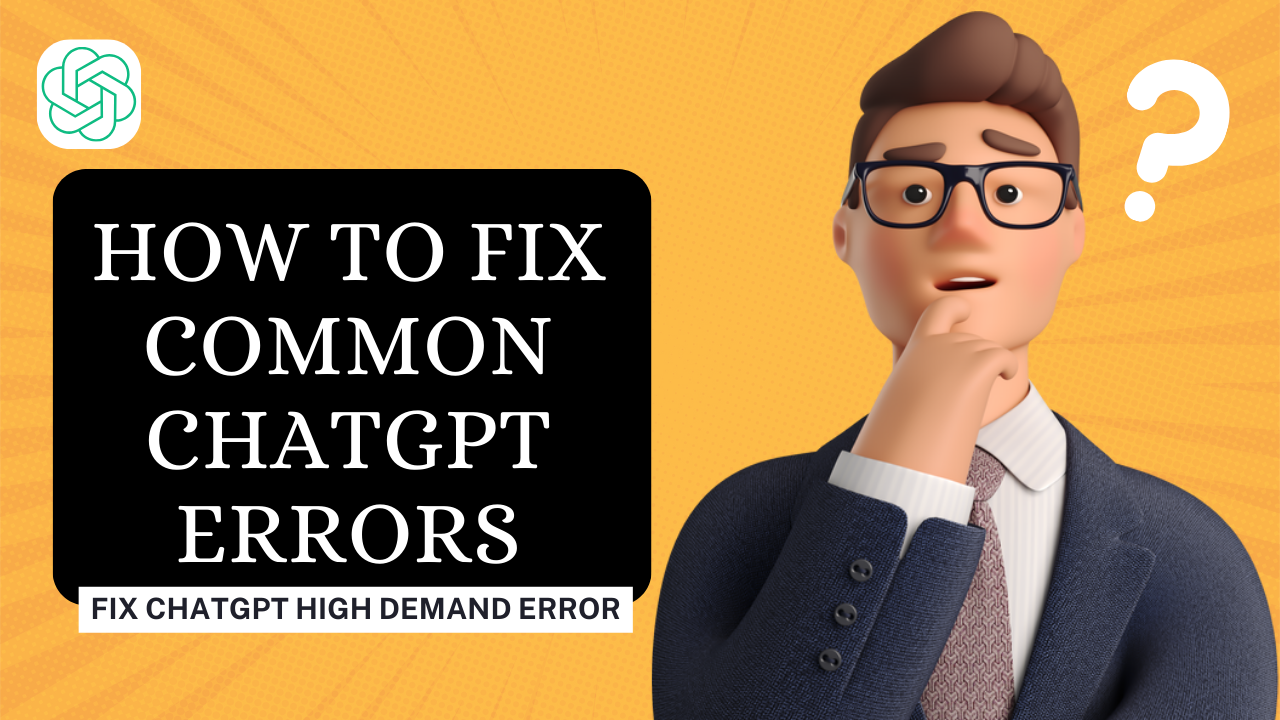ChatGPT Errors: Fix ChatGPT High Demand Error Causes and Solutions
ChatGPT, introduced just half a year ago, has rapidly become a global sensation. Starting modestly, OpenAI continuously enriched ChatGPT with numerous features, including the powerful GPT-4 LLM upgrade, amplifying its capabilities. Users can now even leverage top ChatGPT plugins for internet access. Despite its remarkable journey, many users have faced the frustrating hurdle of encountering a “network error” that brings the bot to a halt. Having experienced this issue ourselves, we’ve compiled various solutions to tackle the ChatGPT network error in this comprehensive guide.
Debuting on November 30, 2022, ChatGPT has swiftly emerged as a revolutionary chatbot, utilizing machine learning to deliver automated responses to queries and requests. Its sophisticated and conversational capabilities have captivated users eager to engage with it. However, a common stumbling block for some users is the “ChatGPT is at capacity right now” error. This post outlines straightforward methods to help you overcome this vexing issue. Take a look and implement these solutions to enhance your ChatGPT experience. So, let’s dive in and resolve this error.
Understanding the “ChatGPT is at capacity right now” Error
Encountering the “ChatGPT is at capacity right now” error occurs when trying to utilize the AI chat service. This particular error message indicates that the language model is currently incapable of managing incoming requests due to a substantial influx of traffic. Typically, this issue arises during peak usage hours, a period when a significant number of users are simultaneously accessing the service.
The error message manifests when the system becomes overwhelmed by the sheer volume of users during these peak hours, impeding its ability to effectively handle additional requests.
Understanding the Persistent Capacity Constraints of ChatGPT
Due to its widespread popularity among millions of users globally, ChatGPT, as a prominent language model, frequently grapples with high demand. The system may consistently reach its capacity when numerous users engage with it simultaneously. This surge in demand can overwhelm the system, resulting in delayed response times or diminished accuracy.
However, it’s essential to recognize that ongoing technological advancements and the increasing availability of computing resources are anticipated to contribute to the expansion of capacity for language models like ChatGPT. As technology progresses, the model’s ability to handle concurrent interactions is expected to improve, mitigating the challenges associated with persistent capacity constraints.
ChatGPT at Full Capacity: An Entertaining Twist
When ChatGPT is operating at maximum capacity, alongside the familiar “ChatGPT is at capacity right now” error message, users can expect a delightful surprise in the form of an AI-generated poem, song, or story. This creative touch adds an entertaining element to the chatting experience, turning a temporary limitation into an opportunity for amusement.
During our attempt to assess its capabilities while the service was at full capacity, we received the following notification, showcasing the platform’s ability to inject a bit of fun into the user experience.
Peak Hours for ChatGPT
The peak hours for ChatGPT fluctuate based on the user’s location and time zone. Typically, the service encounters the highest traffic during standard business hours, specifically between 7 AM and 12 AM.
Outside of these peak hours and during weekends, usage tends to decrease. Notably, since a significant portion of ChatGPT users hails from Europe and the US, attempting to connect during their respective sleep hours may enhance the likelihood of successful access.
How to Fix ChatGPT Errors
In line with its name, the ChatGPT network error arises when the AI chatbot encounters difficulties connecting with OpenAI servers. This interruption occurs when the link between your browser and their server fails, prompting ChatGPT to display the corresponding error message. The causes for the ChatGPT network error are diverse, spanning from straightforward issues such as an OpenAI outage to more complex scenarios like extended responses from the chatbot. Fortunately, we’ll guide you through the steps to resolve the ChatGPT network error, providing solutions for a seamless user experience.
1. Addressing ChatGPT Network Errors
ChatGPT network errors may arise when users request complex or lengthy responses. Additionally, disruptions in the internet connection during ChatGPT’s response generation can trigger this error
This error may also occur due to server-side issues or if the chatbot attempts to compose answers for longer than 60 seconds, often induced by excessively verbose questions. Despite being one of the more common ChatGPT errors, resolving it is feasible.
How to fix the ChatGPT network error
- Test Your Internet Connection: Check your internet connection as a first troubleshooting step, especially if the error message appears and you haven’t been requesting substantial information. A poor or intermittent connection might be the culprit.
- Break Down Requests: Avoid network errors by breaking down complex prompts into smaller sub-requests. This helps streamline the communication process with ChatGPT.
- Set Response Limitations: To prevent consistent network errors, set specific limitations on ChatGPT’s responses. For instance, request information “in no more than 100 words/four lines.”
- Simplify Requests: Simplify your instructions to ChatGPT if you’re encountering network errors. While the chatbot can handle complex commands, simplifying requests may be necessary if the error persists.
- Coding Considerations: If you’re coding with ChatGPT, use phrases like “don’t use comments in code” or “don’t use empty lines in code” to reduce the size of the response. This can be particularly helpful if you want concise answers.
By following these steps, users can mitigate ChatGPT network errors and enhance the overall interaction with the chatbot.








1 thought on “Best Method for How to Fix ChatGPT High Demand Error 2024”